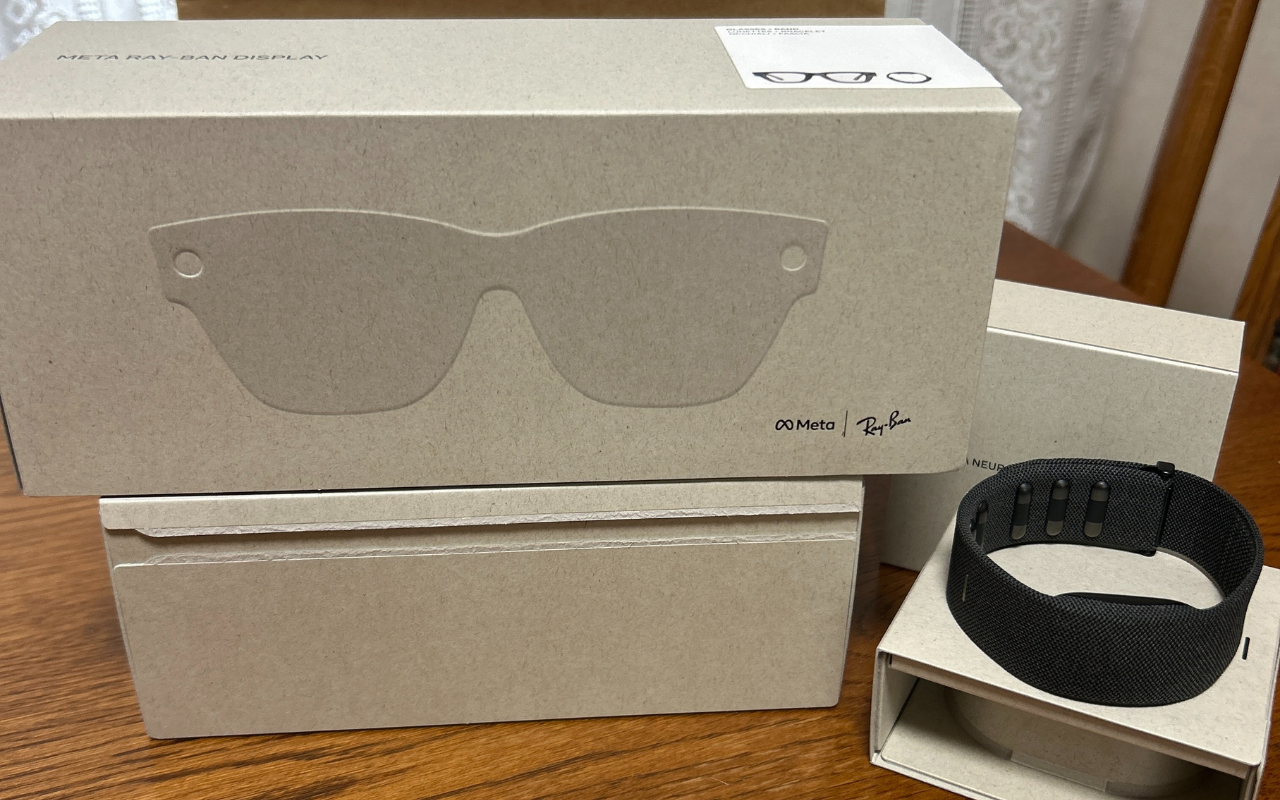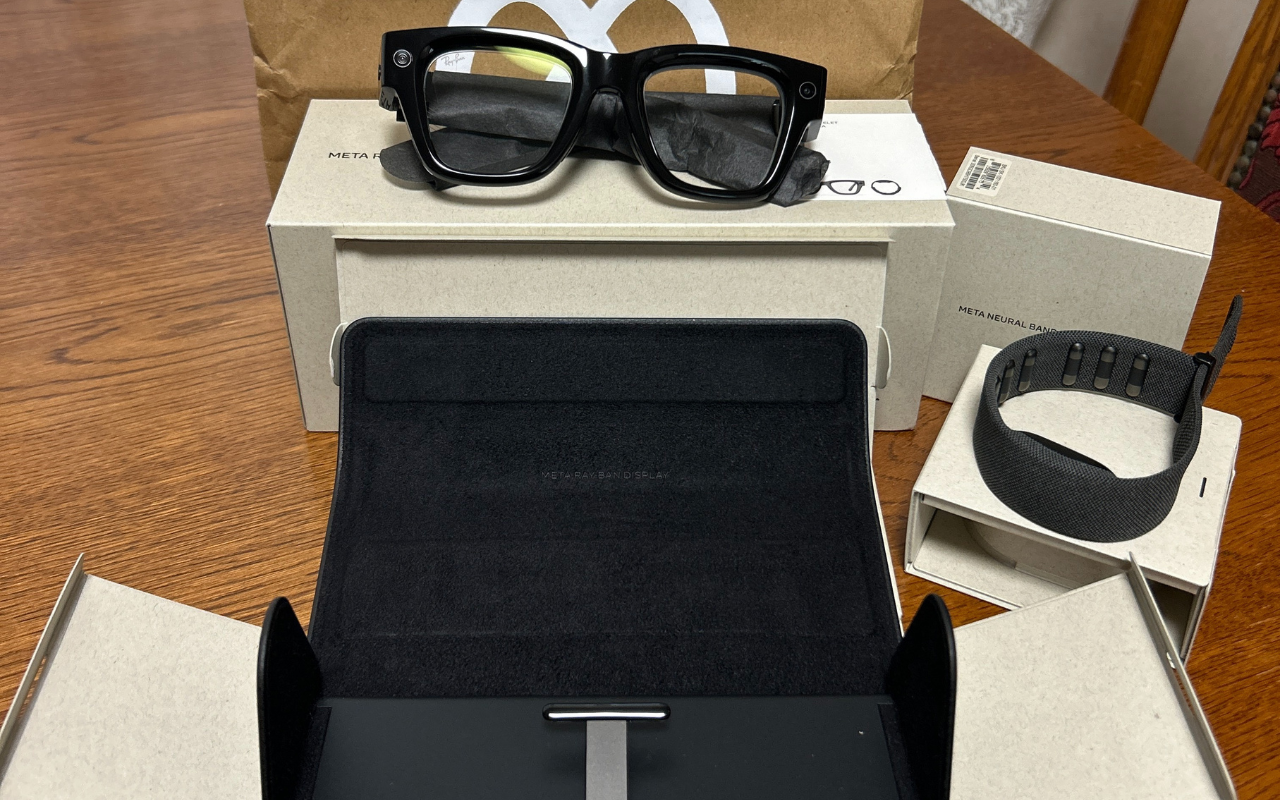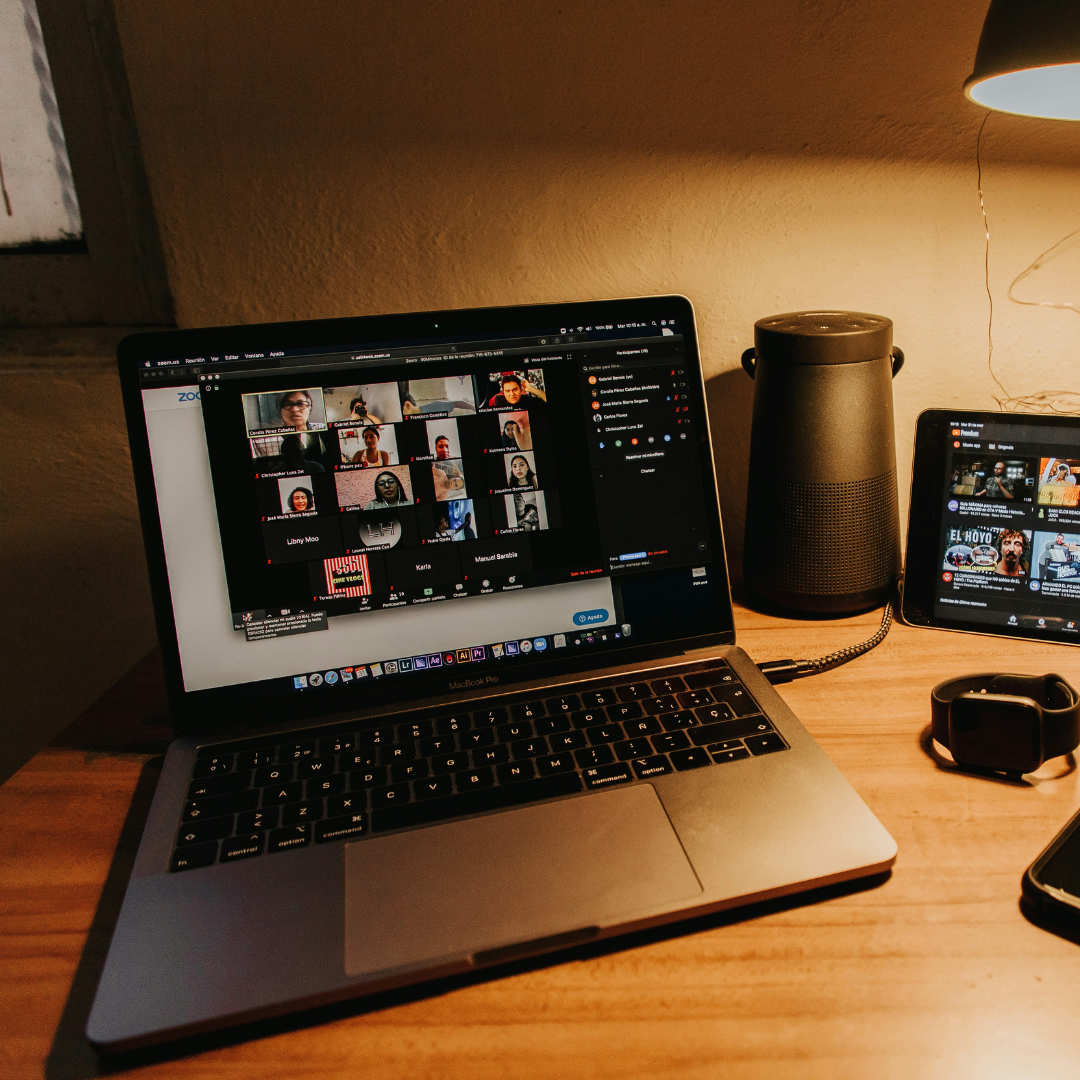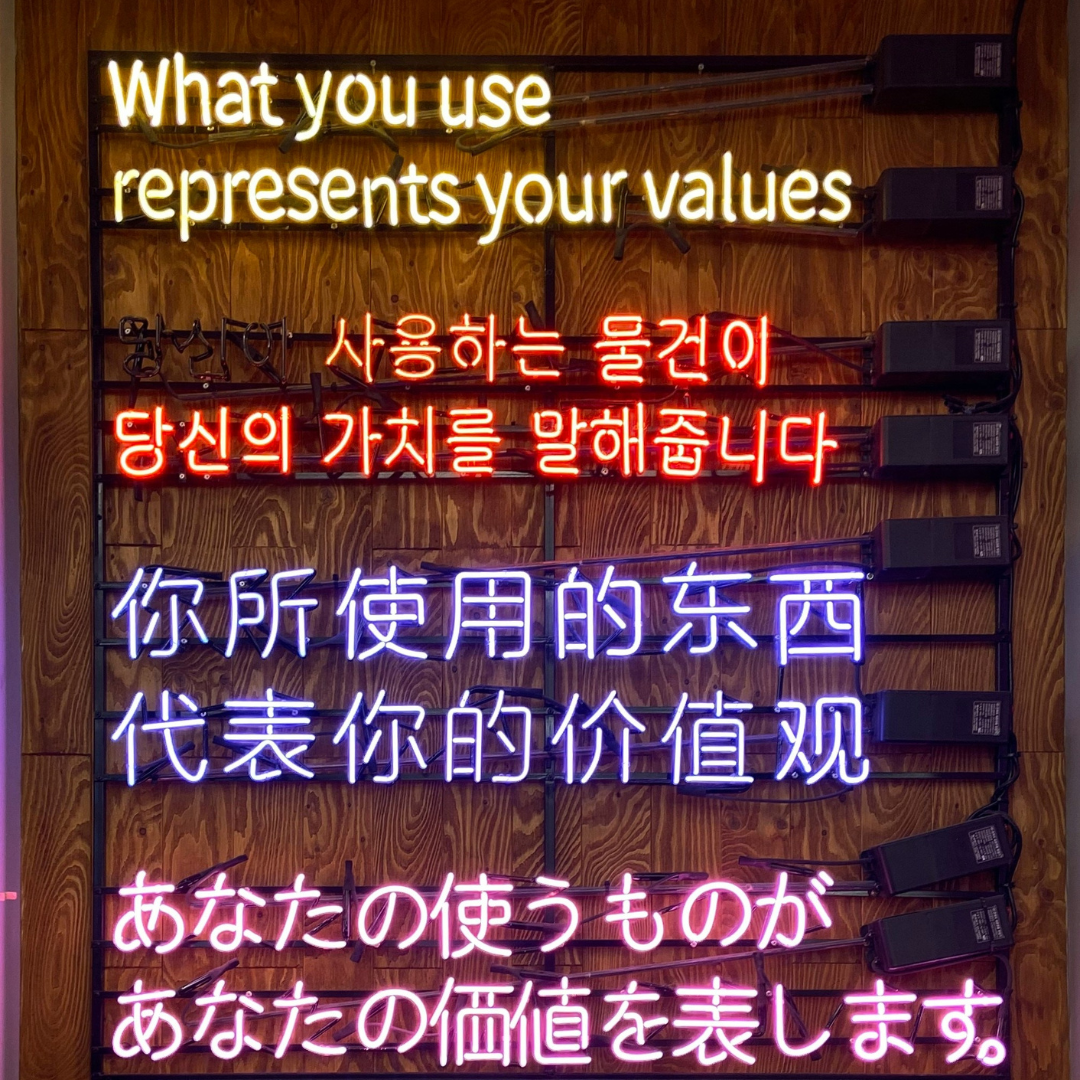JotMe Max
JotMe Lite

Chrome

Recently, I was in California for an event and couldn’t resist purchasing the newly launched Meta Ray-Ban Display Glasses. As someone who works so closely with tech, building JotMe, and continuously working on bettering it, I wanted to understand and explore the functionalities of the glasses.
I wanted to do a test ‘through all terrain,’ so I took the Meta Ray-Bans everywhere—on walks, in meetings, and while grabbing a quick cup of coffee outside. After trying them out for a couple of days, I have a mixed bag of reviews. In this review, I am going to share my experience and detail the features I loved, as well as a few things that Meta needs to improve in the glasses.
Ray-Ban Meta Glasses are smart eyeglasses that combine the style of Ray-Ban frames with advanced functionalities like capturing photos and videos, making calls, listening to music via built-in speakers, and interacting with Meta AI. These glasses come with the Meta Neural Band, which you can wear like a watch, allowing you to control or use the frame via gestures.

As somebody who’s fascinated by AI-powered, wearable tech, I wore the Ray-Ban Meta Display Glasses everywhere and for almost a week, until I had my favorites and not-so-favorites (which I detail later). Let me break down the tech specs of the Ray-Ban Meta Display Glasses, including the camera, display, audio, and battery:
OS Compatibility: The glasses are compatible with iOS 15.2 or above and Android 10 or above.
The Meta Ray-Ban Display Glasses have some great features that you can use for specific tasks without depending on your phone. After wearing the glasses for 4-5 days continuously, here are the best and most useful features of the glasses, according to my specifications and needs:
The Ray-Ban Meta Display Smart Glasses are currently available only in the US, with a starting price of $799. The original Ray-Ban Meta Smart Glasses were released on October 17, 2023, with a second generation (Gen 2) launched on September 17, 2025. More recently, Meta announced and released Meta Ray-Ban Display Glasses with augmented reality features, which went on sale on September 30, 2025, at limited retailers.
I live in Japan, and the glasses aren’t available there yet. When I went to California, I was able to get my hands on them and try them out for a couple of days. The Meta Ray-Ban Display is planned to be available in Canada, France, Italy, and the UK in early 2026. Meta states that some features are available in selected languages or countries and asks users to check local availability.

As of now, the initial rollout announcements do not include Japan/Asia, as Meta is focusing on the US first, followed by the UK/Europe next. The US, with its tech-savvy population and significant demand for premium electronic products, is an ideal market for testing and getting feedback on new, luxury products. Some users may import via global retailers, but it comes with the risk of missing features, a lack of warranty, and software support.
I’ve done a region-wise categorization below to help you better understand where the Meta Ray-Ban Display would be available and from when:
| Region | Status (as of late 2025) | Expected / Planned |
|---|---|---|
| United States | Available (select in-store only) | Restocks, possibly broader retail / online later |
| UK / Europe | Not yet launched | Early 2026 rollout announced |
| Japan / Asia | Not yet launched / no official date | Likely sometime after Europe, but no formal timeline |
I bought the glasses soon after release and tried them on, using them in both indoor and outdoor spaces and trying to understand their features, what I liked, and what I didn’t like. After briefly outlining my thoughts about the Ray-Ban Meta Display Glasses on X, I wanted to do a more comprehensive and detailed review of the glasses.
I’ve used the glasses during meetings, during coffee breaks, and for calls with my colleagues back home in Japan. After having used them pretty consistently for 4-5 days, I’ve outlined what stood out to me about the Ray-Ban Meta Display Glasses and what they could’ve done better.

The Ray-Ban Meta Glasses impressed me with their subtle design, gesture control, live captions, and the in-lens display that shows a preview when using the camera and exhibits notifications and media. I’ve explained them in detail below:
While there are a number of impressive things about the Meta Ray-Ban Display Glasses, I think there is still room for improvement in terms of battery life, refresh rate, notification overloading, inaccuracy in captions/translations, and more. Here are some areas of improvement that I thought the Ray-Ban Meta Display Glasses could work on:
Overall, the display doesn’t yet operate as flawless AR, but delivers a far better experience than simple smart glasses.
At JotMe, we are actively building an interpreter layer for this device using the Meta Ray-Ban Display SDK or APIs. We aim to make AI interpretation feel like a human conversation. It would be like having a personal and trusted human interpreter next to you.
Here’s what we are focusing on:
Yes, it is worth buying the Ray-Ban Meta Glasses. I’d say it’s value for money, especially if you’re a YouTuber or social media creator. You can use it for live streaming or sharing Instagram reels and posts. Apart from this, if you’re a travel vlogger, you can capture new destinations that you explore without having to carry heavy camera gear. It would also be a good purchase for parents to record family memories and reminisce about them in the future.
From professional uses to day-to-day scenarios, the Ray-Ban Meta Display Glasses are a decent purchase. However, I think that the display of the glasses could be slightly better adjusted for outdoor use, and the real-time captions feature could be a bit more intuitive and accurate.
No, you cannot FaceTime with Meta Ray-Ban Glasses, because FaceTime is an Apple product, and these glasses don’t integrate it. However, you can use the glasses for video calls on other platforms, such as WhatsApp, Messenger, and Instagram.
Yes, the Ray-Ban Meta Glasses feature a high-quality display in the right lens that allows you to make calls, capture photos, get live captions, use Meta AI, and more.
Yes, Meta Ray-Ban Display Glasses can translate live conversations in English, French, Italian, Spanish, Portuguese, or German. You can see translated conversations in the in-lens display or in the Meta AI mobile app. The other person can read your translated dialogues in the Meta AI mobile app or listen to them via the glasses’ speakers by tapping.
With the Ray-Ban Meta Glasses, you can take photos and videos, make hands-free calls, respond to messages, listen to music with open-ear speakers, get captions, check the weather, and get directions using Meta AI.
The Ray-Ban Meta Gen-1 Glasses take 75 minutes to fully charge and can reach up to 50% in 22 minutes when charging in the case, providing up to 4 hours of moderate use. Even the Ray-Ban Meta Gen-2 Glasses can be fully charged in 75 minutes and reach up to 50% in 20 minutes, providing up to 8 hours of moderate use.

Win Globally


